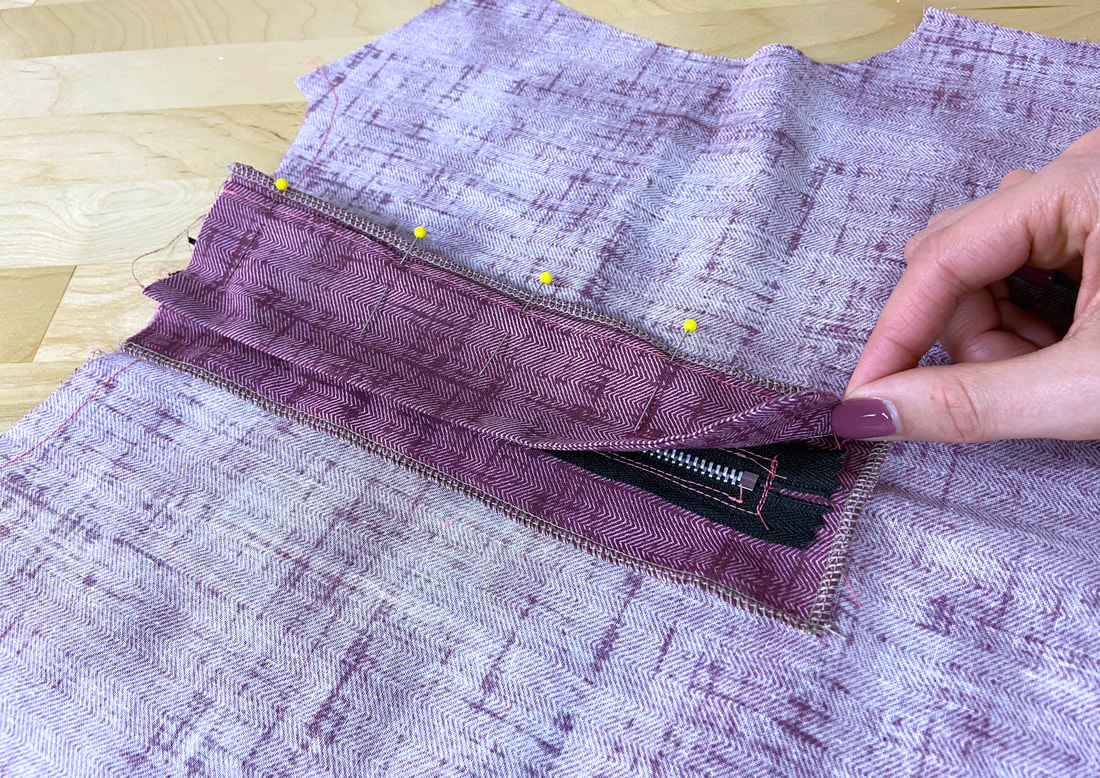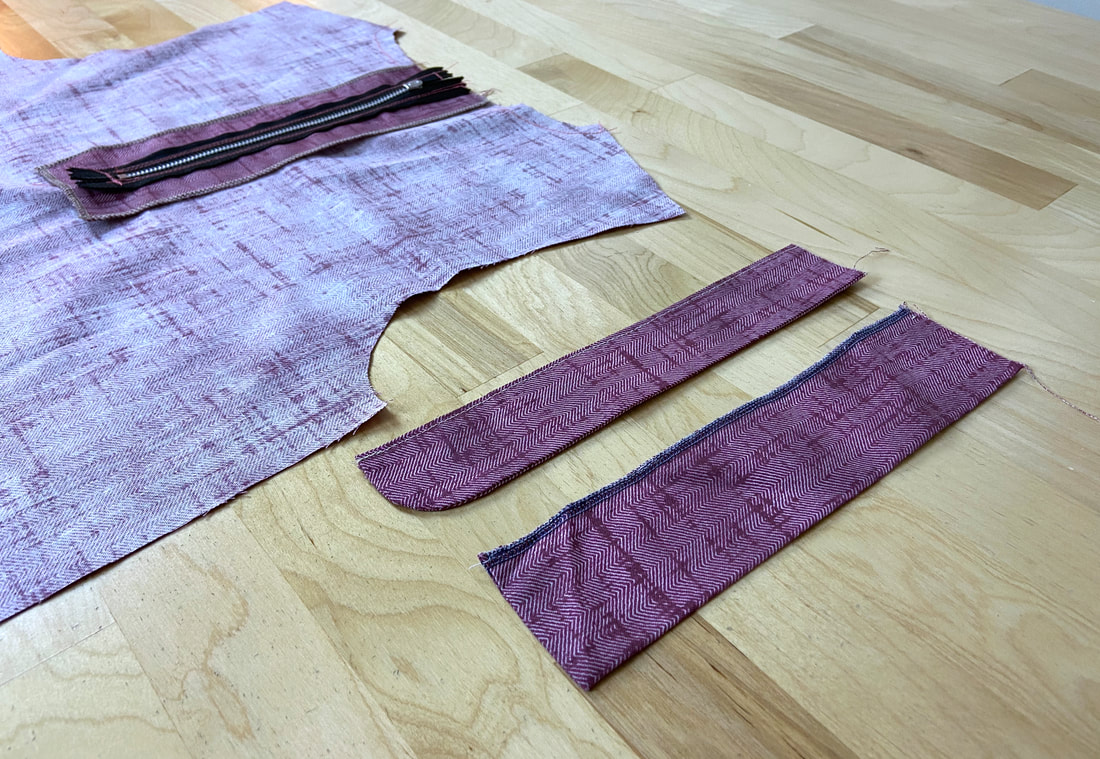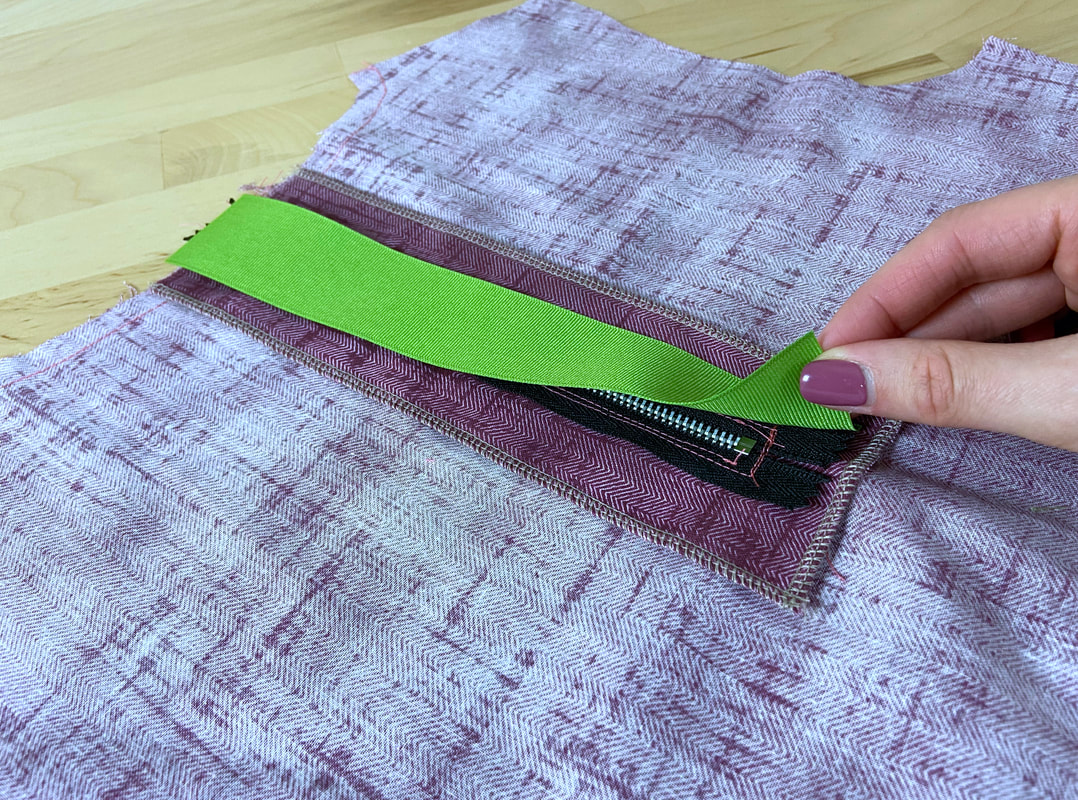Two Types Of Zipper Underlays Used In Dressmaking
Zipper underlays are attached to the wrong side of certain zipper applications to provide a buffer between the skin and the zipper teeth/tape.
Underlays should cover the entire length of the zipper, completely hiding all zipper components underneath. Underlays are most commonly used with metal zippers, since these can cause more skin discomfort and irritation.
You can choose whether to use an underlay on a case-by-case basis. When sewing a fly front zipper application for example, an underlay is required for full functionality and comfort.
There are two types of zipper underlays in dressmaking:
Underlays should cover the entire length of the zipper, completely hiding all zipper components underneath. Underlays are most commonly used with metal zippers, since these can cause more skin discomfort and irritation.
You can choose whether to use an underlay on a case-by-case basis. When sewing a fly front zipper application for example, an underlay is required for full functionality and comfort.
There are two types of zipper underlays in dressmaking:
The most conventional and widely-used zipper underlay style is a double-layer compartment with clean finished edges typically made of the same fabric as the garment. This type of zipper underlay can have a curved bottom edge, in which case, the underlay is constructed of two separate pieces finishing each other's edges.
A simpler underlay style is constructed of a single fabric layer that is folded onto itself for clean finishing. In this case, the underlay's bottom features a straight corner edge.
A simpler underlay style is constructed of a single fabric layer that is folded onto itself for clean finishing. In this case, the underlay's bottom features a straight corner edge.
If you prefer not to construct a separate underlay, you can take a shortcut by using a wide ribbon strip. As you might have guessed, this is called a ribbon underlay and can be purchased at your local fabric store in a variety of color choices and widths.
When choosing a ribbon underlay it is important to consider two important factors: The ribbon strip you choose should be wide enough to cover the entire zipper including both zipper tape portions. Secondly, the ribbon should be thick and stable enough to maintain its structure during the garment's life cycle, including continuous wash cycles.
When choosing a ribbon underlay it is important to consider two important factors: The ribbon strip you choose should be wide enough to cover the entire zipper including both zipper tape portions. Secondly, the ribbon should be thick and stable enough to maintain its structure during the garment's life cycle, including continuous wash cycles.




